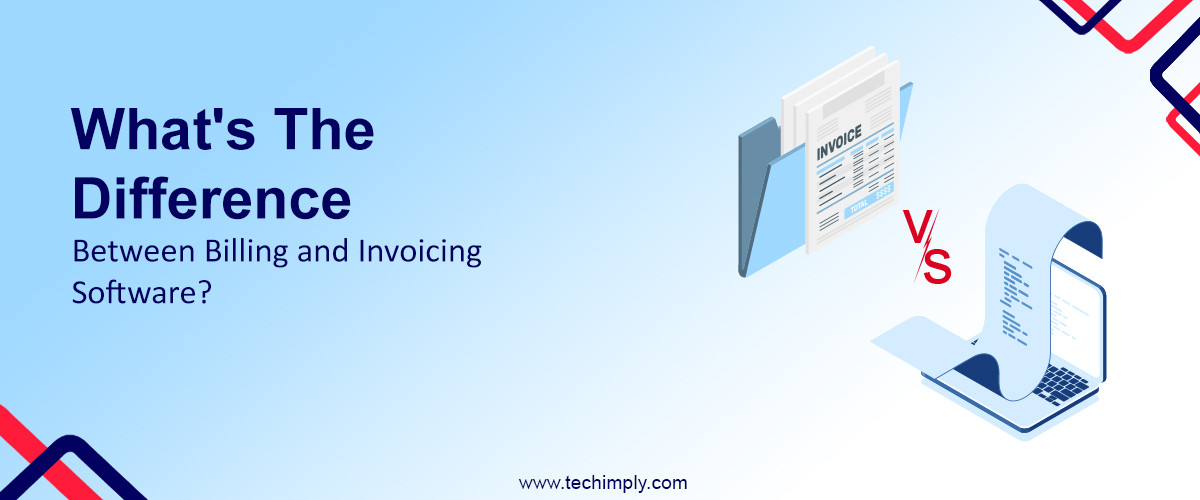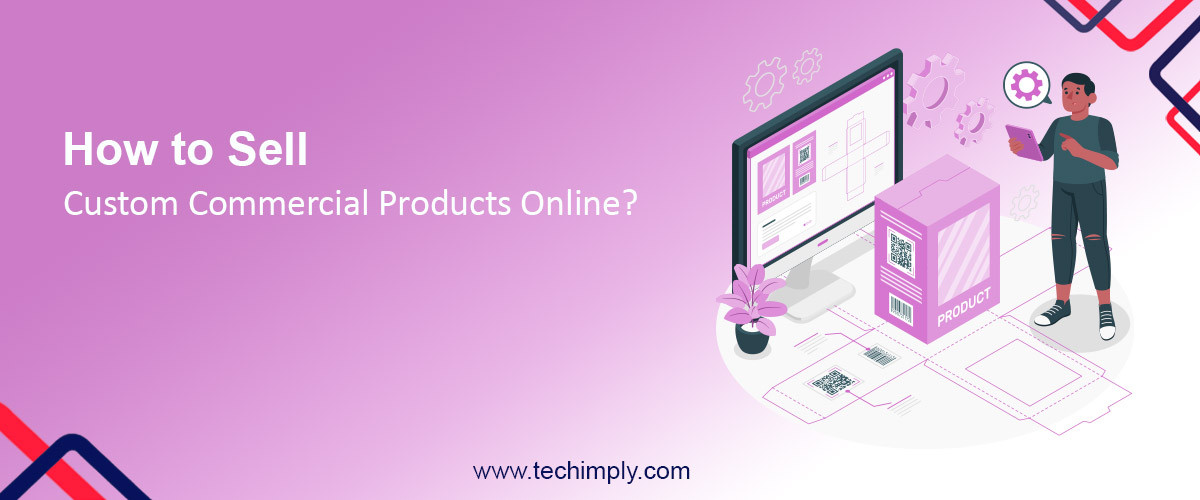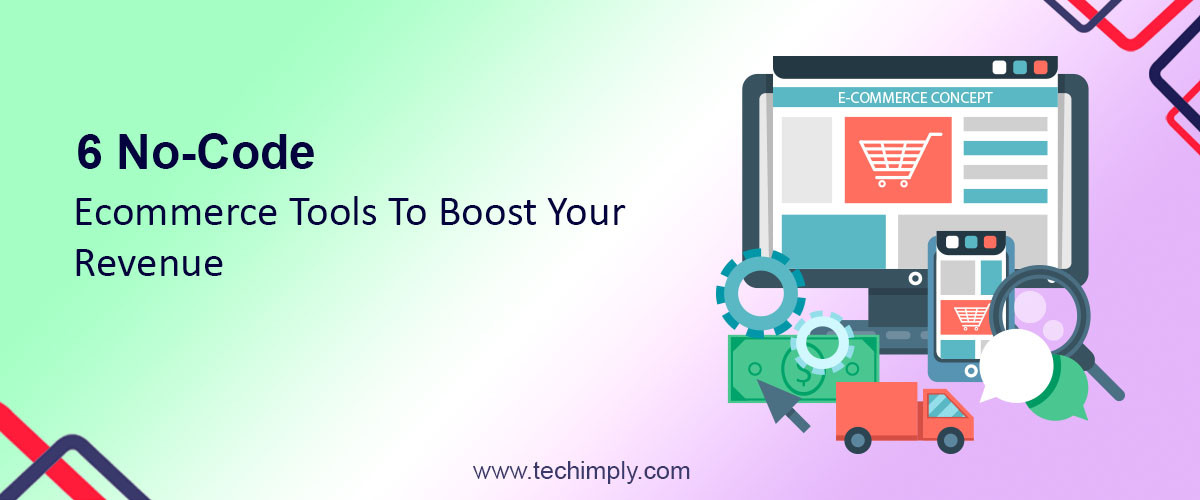Billing" and "invoicing" are phrases that are frequently used interchangeably in the context of financial management and corporate operations, which can be confusing. Still, they stand for different procedures within the larger field of financial dealings. This thorough investigation seeks to define the distinction between billing and invoicing software and illuminates the critical role that specialized software plays in each.
Understanding Billing:
The process of billing entails creating and delivering invoices or bills to clients for products or services rendered. It includes all of the tasks involved in figuring out costs, writing bills, and giving them to customers.
Features Of Billing Software:
The purpose of billing software is to make the process of billing more efficient. It frequently has attributes like:
1. Rate Calculation: Charges are automatically calculated using preset rates, units, or other indicators.
2. Invoice Generation: Producing bills that include quantities, rates, total amounts, and itemized details.
3. Client Information Management: Maintaining and archiving client information to ensure proper invoicing and correspondence.
4. Payment tracking: keeping track of payments made and amounts past due and sending out reminders.
5. Reporting and Analysis: Producing reports to examine trends in revenue, billing, and overdue payments.
Billing Software Keywords:
-
Automated billing software:
By handling revenue management, payment monitoring, and invoicing with ease, automated billing software transforms financial operations. By automating the calculation and generation of bills based on preset rates or consumption indicators, this cutting-edge technology removes manual labour. Automated billing speeds up the entire billing cycle, minimizes errors, and assures correctness.
This software maximises productivity, freeing up time for organisations to concentrate on strategic financial decisions while maintaining a simplified and error-free billing workflow. It may be used for both one-time and recurring invoicing for subscription services.
-
Recurring billing solutions:
These solutions provide organisations with an automated and organized way to invoice for subscription-based services. They are a fundamental component of contemporary financial management. By automating the creation and sending of regular invoices at predetermined periods, these systems simplify the procedure.
Recurring billing tools guarantee prompt and consistent invoicing for both monthly and annual subscriptions, saving labour costs and improving customer satisfaction. Through a smooth and effective recurring billing process, businesses may maximize income streams, reduce late payments, and cultivate long-term client relationships with features like automatic payment processing and customizable billing cycles.
-
Tools for making detailed invoices:
These are key parts of contemporary financial systems, providing firms with effective, automated ways to create thorough invoices. By precisely automating the creation of polished, itemized bills, these solutions simplify the invoicing process.
These tools guarantee invoicing accuracy and consistency by recording transaction facts and adding customizable branding components. Invoice generation tools enable businesses to create, customize, and deliver invoices with ease, saving time and improving the entire invoicing experience for clients and businesses alike. These tools frequently come with user-friendly interfaces and integrated functionality like tax computations and payment alternatives.
.jpg)
-
Payment monitoring systems:
These systems are essential to financial management because they give companies a thorough way to keep an eye on and handle incoming payments. These systems give real-time insights into pending, received, and past-due payments by automating the tracking of payment statuses.
Businesses may effectively balance accounts, alert customers when payments are due, and keep an open and well-organized financial workflow by centralizing payment data. Payment monitoring systems improve cash flow management, cut down on manual labour, and help businesses be more proactive in making sure they get paid on time, which improves their financial stability and health.
-
Client information management:
Specialized systems streamline this process, and it is an essential component of efficient business operations. By centralizing and organizing client data, these solutions give organizations a thorough understanding of interactions and relationships.
Client information management systems make sure that information is accurate and easily accessible, from contact details to transaction history. Features like fields that may be customized, communication tool integration, and automatic updates are common in advanced platforms. Businesses may improve customer relationship management, personalize interactions, and make well-informed decisions based on a deep understanding of their client's requirements and preferences by utilizing these tools.
Understanding Invoicing:
Invoicing is a part of the billing process that focuses on creating and sending clients thorough requests for payment. An invoice is a formal request for payment that usually includes details about the goods or services rendered, their price, and the terms of payment.
Features Of Invoicing Software:
Invoicing software is designed to automate and manage the invoicing process. Important characteristics consist of the following:
1. Creation of Invoices: Producing thorough invoices that accurately reflect the goods or services provided.
2. Customization: enabling companies to alter the appearance and style of their invoices.
3. Payment tracking: keeping track of invoices that have been delivered, tracking complete or partial payments, and reminding people when payments are past due.
4. Integration: For easy record-keeping, accounting and financial systems are frequently integrated.
5. Automation: Automating jobs that need to be done again, such as automated reminders or periodic invoices.
Keywords For Invoicing Software
-
Automated invoicing solutions:
These systems automate the creation, delivery, and tracking of invoices, hence streamlining the invoicing process. These tools guarantee uniformity in billing, cut down on errors, and save time. Recurring invoicing, payment reminders, and customization capabilities allow businesses to streamline their invoicing processes, increase cash flow, and offer a smooth client and finance team experience.
-
Customizable invoice generators:
These enable companies to modify their invoice templates to conform to particular specifications and brand aesthetics. Because of the design versatility these tools provide, firms can use logos, colour schemes, and branding aspects. Adaptable to a wide range of invoicing requirements, customizable invoice generators guarantee a polished and unique portrayal of financial transactions, boosting the reputation of the company as a whole.
-
Invoice tracking systems:
These enable effective monitoring and administration by giving companies real-time visibility into the progress of their bills. By automating the tracking process and alerting users to past-due payments, these technologies enable prompt follow-ups. Invoice monitoring systems improve cash flow management, decrease payment delays, and support a more proactive and structured approach to handling financial transactions through centralized data and automated reminders.
-
Integration with accounting software:
Effective financial management requires smooth integration with accounting software. This functionality reduces errors and eliminates human entry by enabling data synchronization between accounting platforms and invoicing systems. Improved productivity, faster procedures, and accurate and current financial records are all advantageous to businesses. Integrating with accounting software guarantees a unified and coordinated approach to managing spending, bills, and general financial well-being.
-
Automated payment reminders:
These reminders offer clients automated messages about impending or past-due payments, which simplifies the invoicing process. These solutions assist firms in maintaining a steady cash flow, decreasing manual labour, and enhancing communication. Automated payment reminders, with their programmable schedule and customized messages, support a proactive and well-organized approach, guaranteeing on-time payments and improving the overall effectiveness of financial operations.
Differentiating Elements:
1. Range:
- Billing: This includes all of the work involved in figuring out charges, drafting bills, and keeping track of payments.
- Invoicing: This section focuses on creating thorough payment requests and monitoring their progress.
2. Time:
- Billing: This may take place before, during, or following the delivery of goods or services.
- Invoicing: Usually takes place following the conclusion of the prearranged transaction.
3. Interaction:
- Billing: This entails mailing a bill that might or might not list specific things.
- Invoicing: This specifically means delivering the client a thorough payment request or invoice.
4. Automated
- Billing: This entails automatically calculating costs and maybe tracking automated payments.
- Invoicing: It is frequently highly automated, using tools like automated billing cycles and automated reminders for payments.
Importance Of Software Specialisation:
-
Efficiency Gains:
By automating manual activities, lowering errors, and speeding up the entire financial workflow, billing and invoicing software helps firms become more efficient. Automation guarantees precise computations, prompt invoice production, and organised payment monitoring.
-
Financial Visibility:
These software programs give companies a better understanding of their finances. They produce analytics and reports that enable businesses to monitor sales, spot patterns, and base choices on factual financial information.
-
Customer Relationship Management:
Tools for organising and managing customer data are frequently included in billing and invoicing software. Through the upkeep of correct documentation, the facilitation of tailored correspondence, and the guarantee of financial transaction transparency, this supports efficient client relationship management.
Selecting Appropriate Software:
1. Business Needs: Determine the particular requirements of your company. Billing software should be used if thorough financial management is the top concern. Select specialised invoicing software if a more thorough focus on invoicing is necessary.
2. Integration: Take into account the software's ability to integrate with other tools your company employs, like payment gateways, CRM software systems, and accounting software.
3. Scalability: Select software that can grow along with your company. The software should support both your present and future growth, regardless of how big or small your business is.
4. Customisation: Seek software that enables customisation in accordance with your brand and particular billing or invoicing specifications.
Conclusion
Even though invoicing and billing are related procedures, they have distinct functions in a company's financial operations. Expert billing and invoicing software, which offers features like automatic computations and customisable invoicing, is essential to streamlining these procedures. Businesses can improve their financial efficiency, cultivate client relationships, and obtain a competitive edge in today's dynamic industry by comprehending the differences and utilising the appropriate tools.






